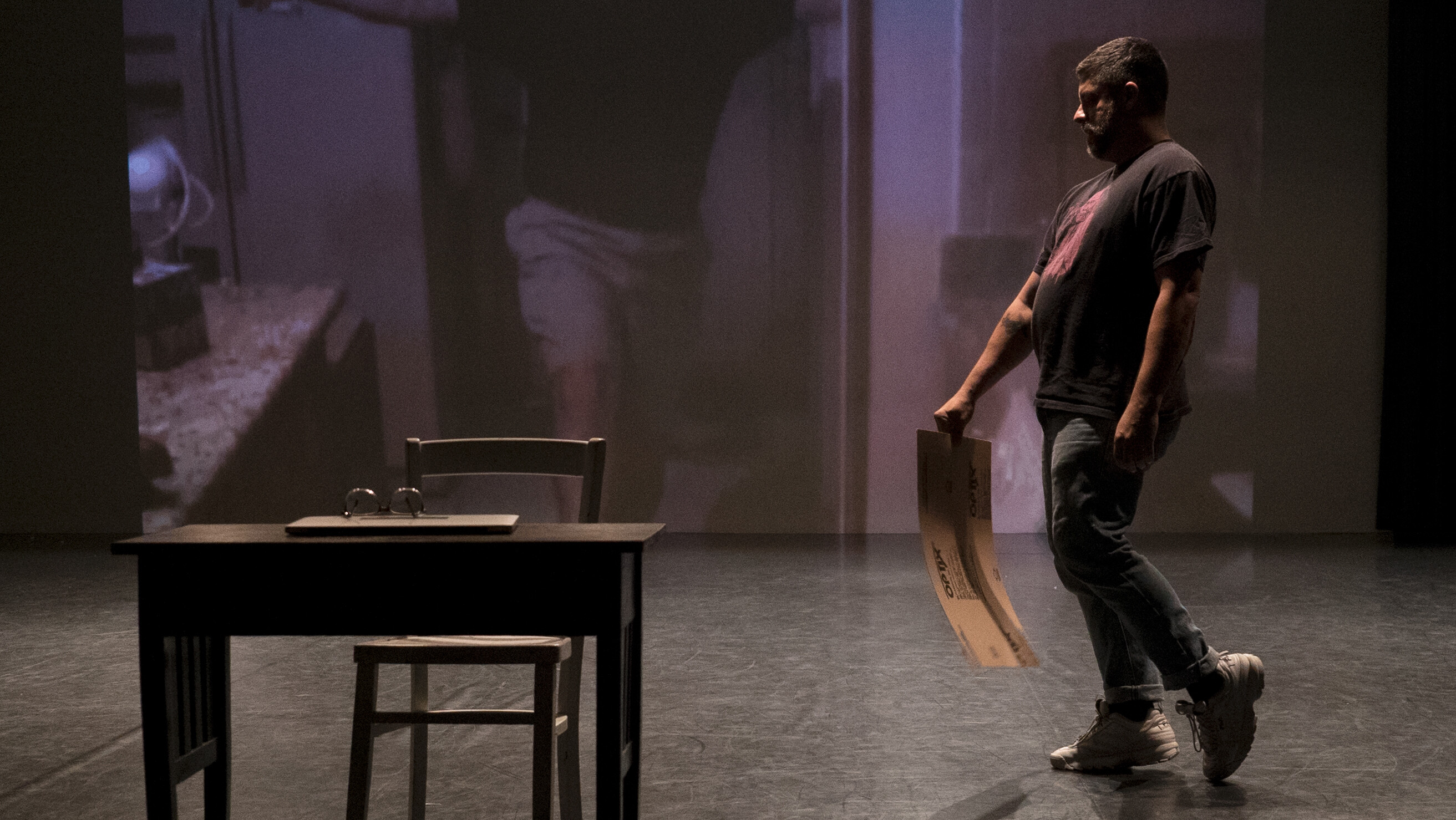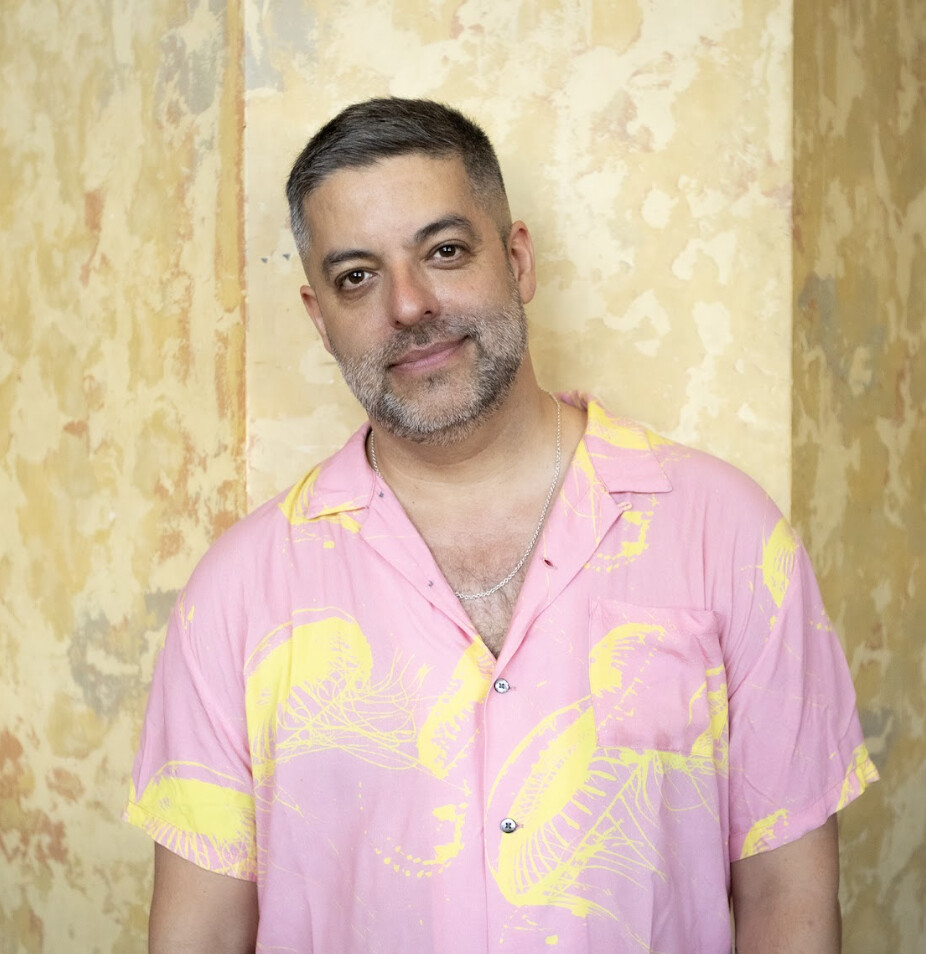Subversive Humanist
Miguel Gutierrez on praxis, Super Nothing, and having a heart while being a bitch
Subversive Humanist
Miguel Gutierrez on praxis, Super Nothing, and having a heart while being a bitch

Miguel Gutierrez is a multidisciplinary dance artist based out of Brooklyn and Los Angeles. He’s known for his off-colorful, high-energy productions that exude a blend of sweet, awkward, obscene, and tender all at once.
From May 1 to May 3, Gutierrez is bringing his most recent dance performance, Super Nothing, to On the Boards in Seattle. Written and choreographed by Gutierrez and performed by Evelyn Lilian Sanchez Narvaez, X, Justin Faircloth, and Wendell Gray II, Super Nothing sets out to answer the question: How can a dance speak to the overwhelming and constant grief that undergirds our lives?
I recently spoke to Gutierrez to learn more about his process and practice, how identity plays into performance, and how he’s looking ahead.
Xavier Lopez: How do you describe yourself?
Miguel Guiterrez: I generally like to think of myself as a person who makes. I don't concern myself a ton with the idea that because I'm a this, I must do this. If I want to make a song, I'll make a song. If I want to write, I'll write. Obviously, choreography is the mothership, but even so, I'm aware of myself as a person whose job is to show up, make, create, and co-create with other people.
XL: We think we know someone by their labels; it’s always far more complex than that. In your work I see a resistance to the expected labels, the identity markers. I especially appreciate how very early on, your performances and titles were rebellious, naughty, even dirty.
MG: Labeling is fraught, for sure. I think as early as a piece like Retrospective Exhibitionist in 2005, I began contending with the challenges of what it means to be seen, literally as a person on stage. This is a contentious situation for me emotionally, because there is so much desire, so much projection and, at the same time, ambition. There is also a plea for recognition or approval that’s woven into the very fabric of performance. I ultimately chose to see this tension as content, rather than just some sort of feeling that I had to navigate.
XL: Or deny.
MG: Or deny! What I experience is an almost vibratory contract between the audience and performer. It feels very alive to me and very much contributes to what's at stake in live performance. You think that you're seeing this, but you don't know yet what this is, and we're kind of getting to figure it out together—we're getting to experience this together! Or maybe this thing that's in front of you is actually not what this thing is at all. Maybe this is all a kind of illusion for the conveyance of something else entirely.
XL: In Super Nothing, you’ll be present as the choreographer and viewer—present, so to speak, in the audience, with the rest of us. What is the significance of that for you?
MG: Super Nothing is unusual for me because I’m not in it. I realized I was able to access a different kind of visual specificity from the outside. I could direct things in a different way, and I could be a little bit more nerdy about interests that I previously felt were these dirty secrets. I think, when you're dancing in your own work, you have this sort of psychosomatic experience of putting your body through something that has significance to you, or that you interpret as meaningful. Like, “I danced and I sweat, so that must mean that something happened.” But when you’re on the outside, you might not feel a damn thing. I believe, as a director, part of my job is to really believe in what I'm seeing.
XL: I’d love to talk about the things that inspire and inform your way of working, in Super Nothing specifically.
MG: It's never going to be the same each time. I'm not a rigid conceptual thinker. My two canonical pieces for me that I come back to over and over again are Neil Greenberg's Not-About-AIDS-Dance and Ralph Lemon's How Can You Stay in the House All Day and Not Go Anywhere? For Super Nothing, we all watched both of those pieces together. I was also really inspired by a series of drawings by Mira Schendel, a Brazilian artist in the ’50s and ’60s. She made this series, Monotypes, which are fascinating, simple drawings that I really love. That became a guiding conscience of sorts for the project. I like to look at things that scare me because of how good they are. It’s important to me, not so much a competitive thing but as a kind of “Fuck, I want to be in conversation with the very best. I want my work to live up to the caliber of these other works that I love.”
And then, you know, I love vulgar shit. I love funny shit. As a queer person especially, early on, you learn that it’s possible to find inspiration at the opera and at a basement drag show. The high/low art spectrum is a meaningless construct to me in terms of what I like or what influences me. Whether it's fucking Charlene Incarnate, kicking ass as a trans woman drag artist, or some fancy fucking classical artist who I see at a museum, it doesn't matter to me.
XL: Which brings me to the question: How are you feeling about the current world we’re living in? What are some of the things you think might affect you and other artists today?
MG: This was a huge question for me as I was making Super Nothing, thinking about what [content] gets in the room and what doesn't. I think I'm interested in defining things in a different way, and I feel like in my work, I'm able to actualize another world. A world that is a place where me and people like me, whatever that means, can feel a sense of identification and find a space to be with themselves. I'm not making work to convince anybody of anything. I'm making work for the people who will identify with it. I think that sometimes, people think I'm making some sort of plea or declaration that, We're all just people! Although I can see why that kind of a humanist interpretation would happen. Somebody once described me as a “subversive humanist.”
XL: What do you think they meant by that?
MG: That I have a heart and that I'm a bitch, at the same time. I can kind of get with that. I learned how to do this early on as a queer person—like how the court jester is the one telling the truth. I employ that as a person in the world a lot. My work is not necessarily a response to the world or a kind of a talk-back so much as a claiming of space—space for us to feel ourselves in relationship to the fucking dumpster fire of world that we're living in right now. Which, it has to be said: The world has always been a dumpster fire for somebody!
In that sense, Super Nothing offers up a perceptual space of alterity. I think that, at its best, this is what art does. This piece also sets up a kind of notion of the epic, in the sense that these stories that we're going through will extend beyond our lifetimes. There will always be problems, and there will always be people fighting for solutions. Sometimes I feel that maybe I'm just at that moment in life where I can see the end game or am starting to understand what’s beyond the horizon. And dance is a beautiful medium to ask questions about all of it: time, the body, meaning, relationship, and, of course, identity.

Super Nothing is at On the Boards from May 1-3. Tickets available at ontheboards.org.